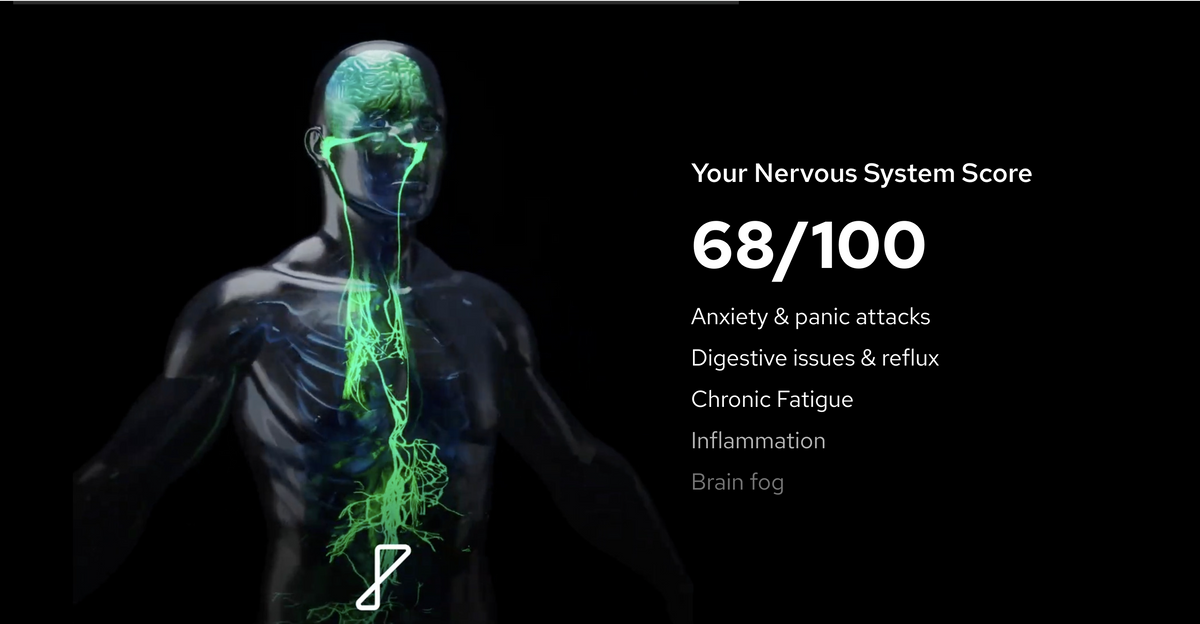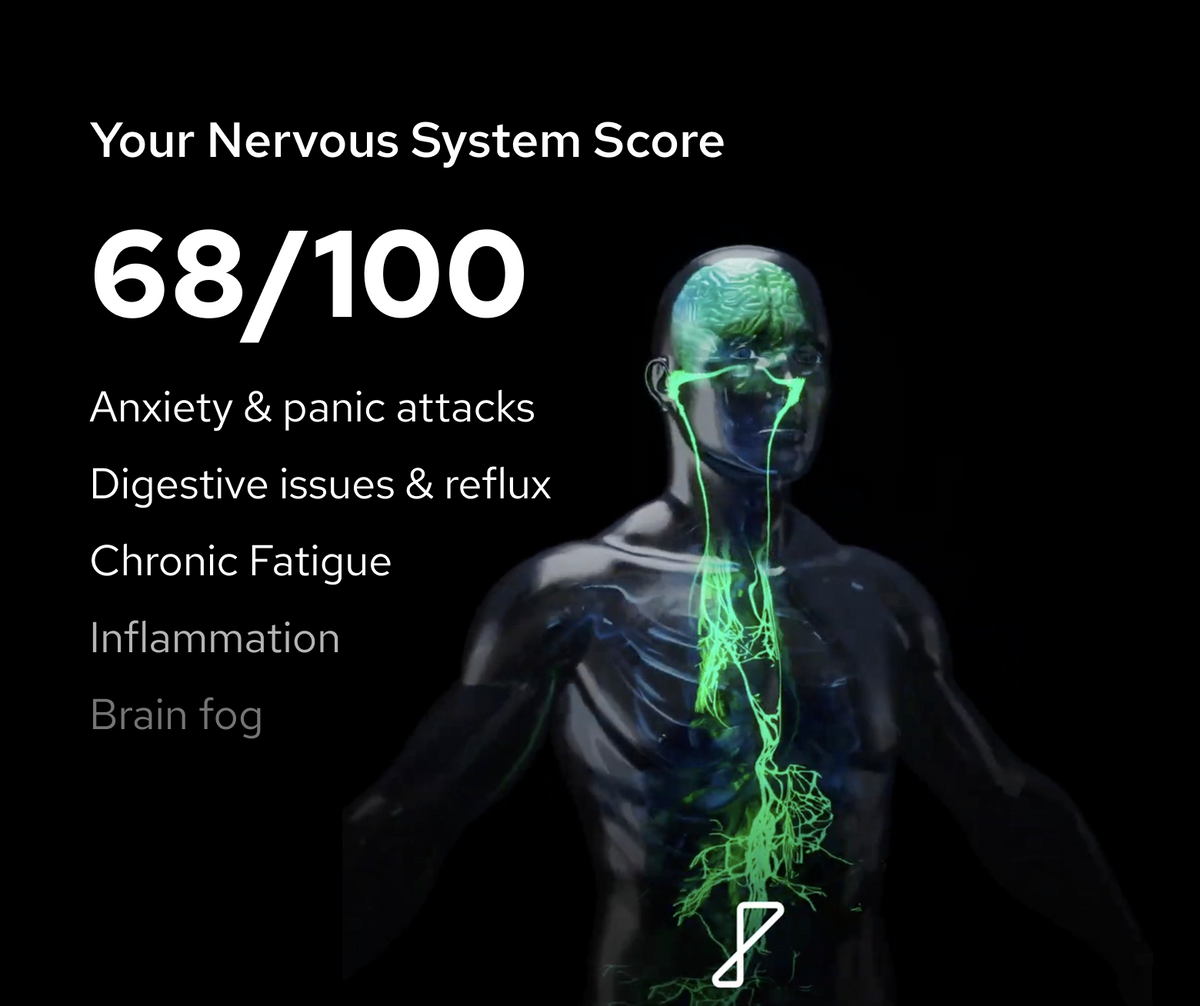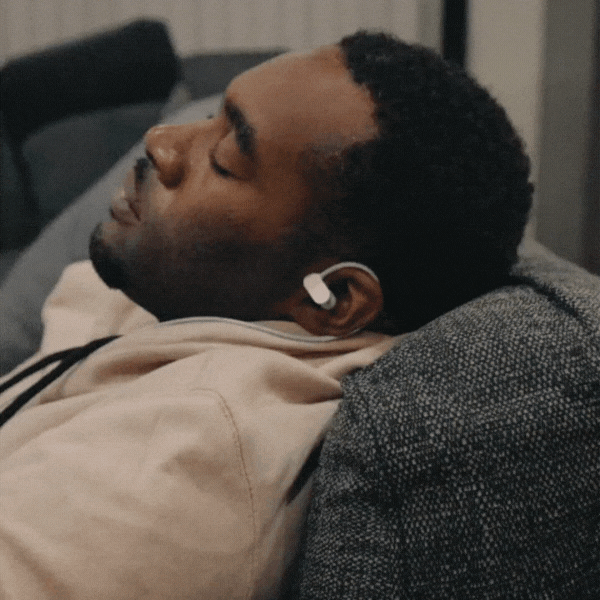
Build Stress Resilience at the Source (Parasympathetic Shift)
1
When stress hits, your sympathetic system (fight-or-flight) surges. Vagus nerve stimulation helps tilt the balance back toward parasympathetic “rest-and-digest,” so you can steady yourself faster.
How it works:
The vagus nerve carries calming signals from the ear to brainstem hubs that coordinate your stress response.
Gentle ear-based stimulation (taVNS) nudges those hubs to dial down over-reactivity and support a more regulated baseline.
With practice, this parasympathetic shift makes it easier to respond—not react—to daily pressure.
What You May Notice:
- A quicker downshift after stressful moments — like the tight-chested tension after a tough meeting, the grip of frustration in standstill traffic, or the jolt of an unexpected problem — so you can exhale, reset, and move forward without carrying the stress into the rest of your day.
- Clearer thinking under load (fewer “snap” reactions, more composure)
- Less end-of-day “wired” feeling so evenings feel calmer

DEREK, US
“I’m calmer in the moments that used to set me off. Ten minutes with Vagus Nerve Stimulation plus a short walk is my reset."

Sleep More Steadily and Wake Clear-Headed
2
When the nervous system stays “amped,” falling asleep and staying asleep are harder. Ear-based vagus nerve stimulation (taVNS) helps dial down hyperarousal, so nights feel steadier and mornings clearer.
How it works:
The vagus nerve boosts rest-and-digest activity and eases the brake on stress circuits.
With a calmer baseline at night, the brain can transition into deeper stages more smoothly and fewer micro-awakenings pull you up.
Consistent sessions paired with good sleep cues support a stronger circadian pattern (sleep at night, alert by day).
What You May Notice
- Easier wind-down (less “wired and tired” at bedtime)
- More continuous sleep - no more staring at the ceiling at 2:47 AM replaying tomorrow's presentation
- Clearer mornings—less fog, steadier energy early in the day

TOM, UK
“When I wasn’t getting enough deep, restorative sleep,it impacted my mood and daily routine. VNS has completely transformed the way I rest.”
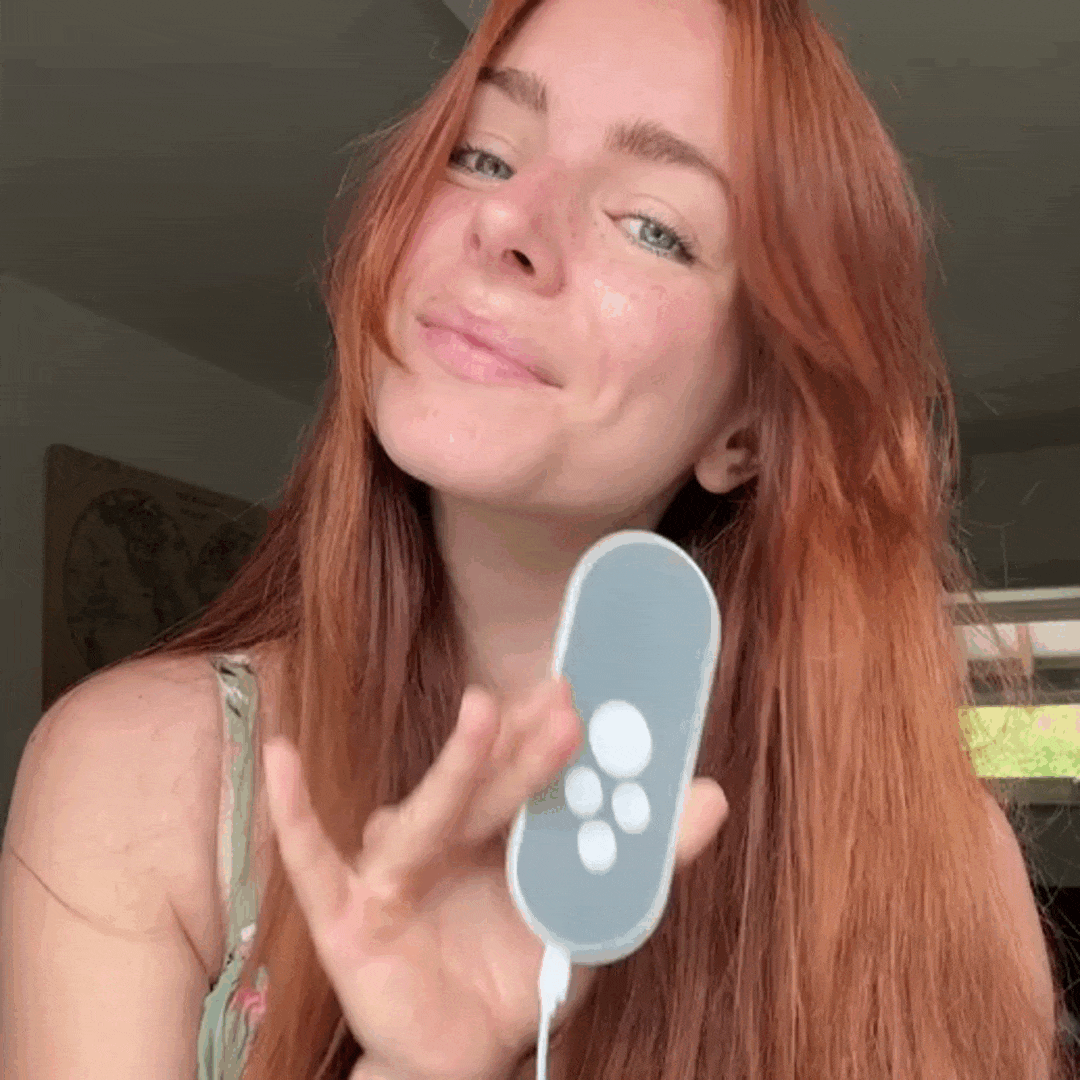
Keep Mood Even and Reduce Rumination
3
Rumination = mental replay. By lowering background arousal, ear-based vagus nerve stimulation (taVNS) makes it easier to step out of thought loops and keep your mood more even through the day.
How it works:
Gentle stimulation at the ear sends calming input to brainstem hubs that influence stress chemistry and attention.
With arousal turned down, the “alarm” systems quiet, and the thinking/planning systems have more room—so loops are less sticky.
Over time, this parasympathetic tilt helps you recover your baseline faster after setbacks.
What You May Notice
- Quicker reset after a jolt (email, conflict, bad news)
- Fewer mental replays of that awkward comment you made, or spiraling about 'what if I can't pay rent next month?'
- More social ease and steadier tone in conversations

JAKUB, UK
“My ... concern was seasonal depressive states… I’ve tried workouts, various meditation apps. I discovered Nurosym … (and) saw results. Even just a couple of weeks in.My anxious thoughts, high stress is gone. I’m able to control it much better.”
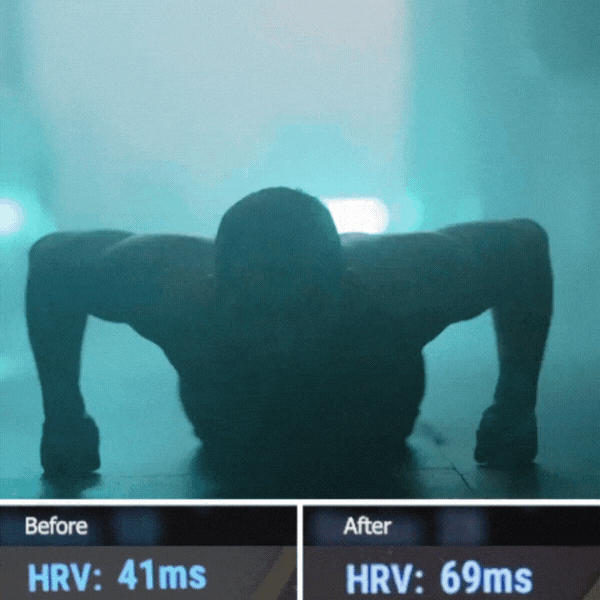
Support Healthy HRV and a Calmer Heart Pattern
4
HRV (heart rate variability) is a simple proxy for how flexibly your nervous system handles stress. Engaging the vagus pathway can tilt the balance toward rest-and-digest, which many people see reflected in steadier heart patterns over time.
How it works:
The vagus nerve acts like a brake on the heart’s pacemaker (sinus node).
Gentle auricular vagus stimulation sends calming input into brainstem hubs that increase parasympathetic influence—often associated with higher HRV and a steadier resting rate.
Slow, exhale-heavy breathing (e.g., ~6 breaths/min) amplifies respiratory sinus arrhythmia, reinforcing the same effect.
What You May Notice:
- Weekly HRV averages holding steady or trending up (don’t judge single days).
- Resting heart rate gradually drifting down or becoming more stable.
- Fewer jumpy spikes from minor stressors; a subjectively calmer heartbeat.

DANIEL, WALES
“I've experienced … improved recovery metrics as measured by my WHOOP device, andan increased ability to focus or train for long periods of time.”

Support a Healthier Cortisol Rhythm, Day to Night
5
Cortisol should peak in the morning and glide down by night. When stress keeps spiking, that curve can flatten. Ear-based vagus nerve stimulation (taVNS) helps the body regulate stress responses, aiming for a steadier daily rhythm—not blunt suppression.
How it works:
The vagus nerve sends calming input into brainstem hubs that talk to the HPA axis (the system that triggers cortisol).
Gentle taVNS can reduce “overshoot” during stress and help the system settle afterward.
Paired with good cues (morning light, regular sleep), this supports the natural day–night pattern.
What You May Notice:
- Calmer evenings (less wired, easier wind-down)
- More alert mornings without the mid-day crash
- Fewer stress spikes from routine hassles

FRANCESCA, UK
“I feel less wired in the evenings and more refreshed in the mornings. Stress during the day doesn’t throw me off as much anymore.”

Recover Sustainable Energy Without Constant Overdrive
6
Lasting energy isn’t about pushing harder—it’s about not riding the stress throttle all day. Engaging the vagus pathway helps you downshift out of overdrive, so energy refills between demands.
How it works:
The vagus nerve promotes the body’s recovery mode (rest-and-digest).
Gentle ear-clip stimulation engages this pathway so the nervous system uses less idle stress to do the same work.
With fewer “micro-leaks” of tension, you get steadier output instead of a boom-and-bust day.
How it works:
The vagus nerve promotes the body’s recovery mode (rest-and-digest).
Gentle ear-clip stimulation engages this pathway so the nervous system uses less idle stress to do the same work.
With fewer “micro-leaks” of tension, you get steadier output instead of a boom-and-bust day.
What You May Notice:
- No more needing that third coffee at 3 p.m. just to think straight, or lying in bed exhausted but unable to shut your brain off
- More even stamina across meetings, deep work, and family time
- Quicker reset after spikes (presentations, tough calls, traffic)

TERRY, UK
“Honestly, I’ve seen such a big difference. I don’t have as many days where I’m so exhausted I can barely move”

Support a Healthy Inflammatory Response (Vagus–Immune Reflex)
7
Your body has a built-in “vagus–immune reflex.” By engaging the vagus pathway, ear-based stimulation can help the body modulate excessive inflammatory signaling—aiming for balance, not blunt suppression.
How it works:
The vagus nerve carries signals that help the brain and immune system “talk.”
Gentle auricular vagus stimulation (taVNS) sends input to brainstem hubs that, in turn, can activate an anti-inflammatory reflex: vagal outputs release acetylcholine, which tells immune cells to dial down over-responses.
Net effect: support for a calmer baseline so everyday stressors are less likely to set off a disproportionate body response.
What You May Notice:
- A general sense of the body feeling less “amped” or tense after demanding days
- Easier post-effort recovery (workouts, long stretches of focus)
- Steadier comfort during normal routines

TIJANA, US
“After a couple of weeks, my body felt more ‘even.’ Daily stress didn’t set off that wound-up feeling, and recovery felt smoother.”
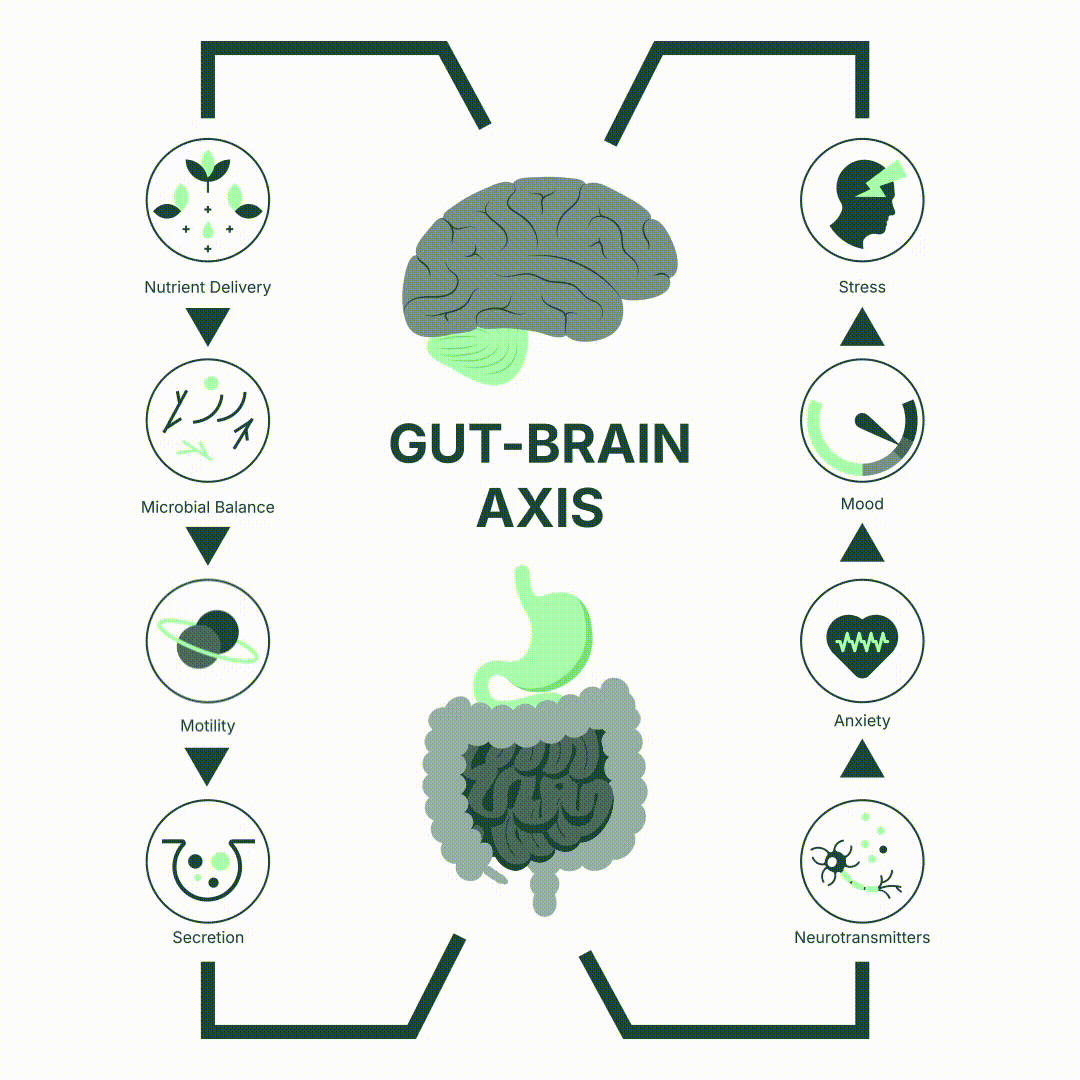
Support Smoother Digestion (Gut–Brain Vagus Pathway)
8
The vagus nerve helps coordinate rest-and-digest functions—saliva, stomach acid, enzymes, and gut motility. Gentle ear-based stimulation can encourage parasympathetic signaling, which many people experience as more comfortable, predictable digestion.
How it works:
The auricular branch of the vagus sends input to brainstem hubs that influence digestive pacing and secretions.
With background arousal turned down, the body can allocate more bandwidth to breakdown and movement instead of “fight-or-flight.”
Over time, this can support a steadier post-meal feel and day-to-day regularity.
What You May Notice
- Your stomach doesn't tie itself in knots after lunch meetings or flutter with nerves during stressful conversations
- Smoother hunger → satiety → comfortable finish to meals
- Steadier post-meal energy with fewer ups/downs
- More predictable day-to-day regularity
- Fewer stress-triggered gut “flutters” during busy moments

HENRY,UK
“Since I started using it I haven't had any reflux. So that's really amazing. It's been three months now. I'm still hoping for some more changes but it's been a significant shift in the right direction.”
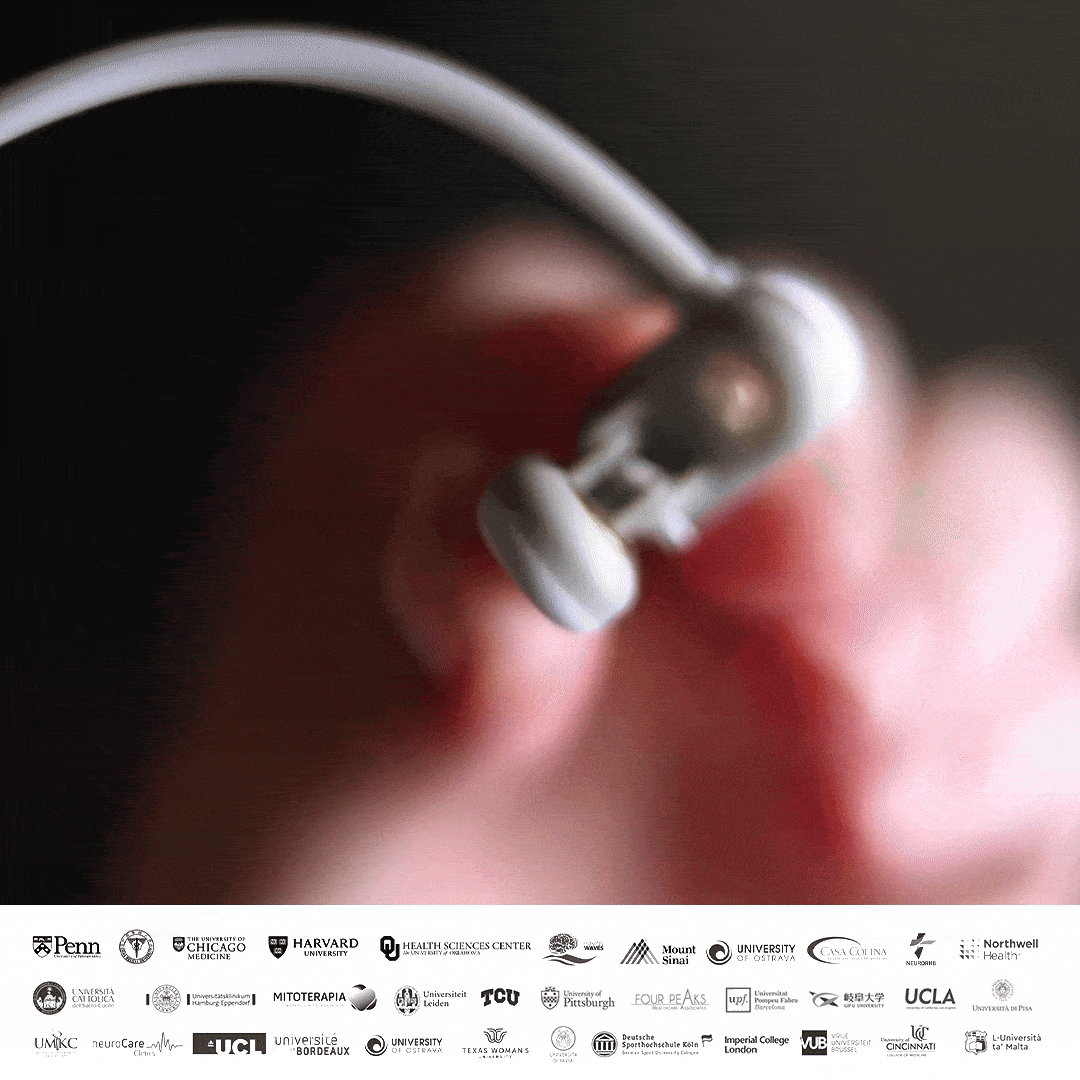
Non-Invasive, Drug-Free, At-Home — Easy to Keep Up
9
Ear-based vagus nerve stimulation (taVNS) is a wearable, at-home practice—no pills, no procedures, no downtime—so consistency is realistic even on busy weeks.
What it is:
A small ear-clip neuromodulation device you can use while reading, answering email, or winding down.
Adjustable intensity: a light, noticeable tingling is enough (it should never be painful).
No clinic visits or recovery; designed for daily life.
Why people stick with it:
- Just 20 minutes while you drink your morning coffee or answer emails - easier than remembering to take vitamins
- Habit-stacking: pair with something you already do (morning reading, afternoon break, evening wind-down).
- Quiet & portable: easy to travel with; doesn’t disrupt family or coworkers.

YVONNE,UK
“Sometimes I'll read a book while I've got it on. And I find that I'm able to concentrate on quite difficult pieces of writing.”
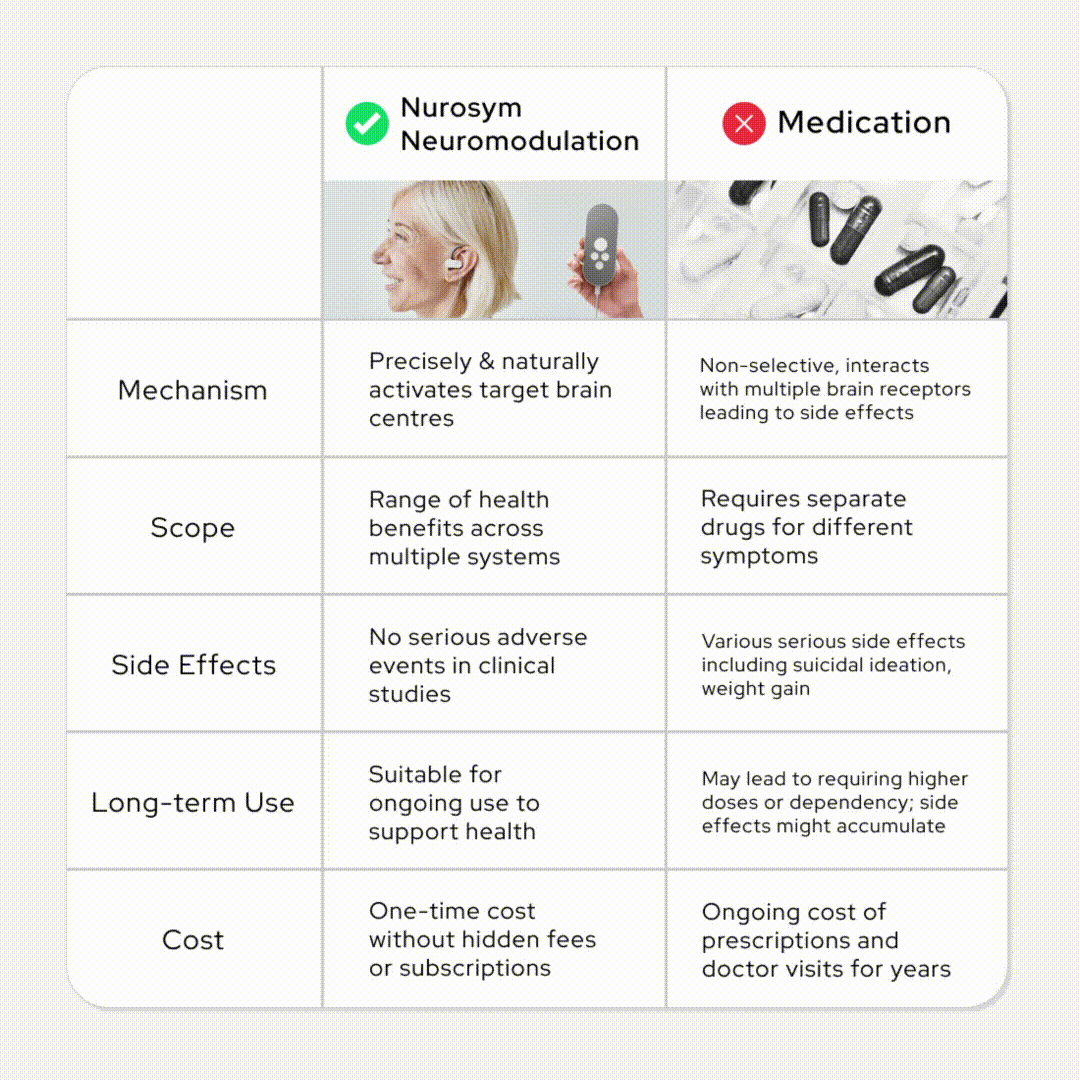
When conventional therapies fail
10
For those exhausted by ineffective options, Nurosym can be a lifeline to regain control over their quality of life. When battling chronic symptoms like headaches, chronic pain, or sleep problems, the lack of effective solution can feel hopeless.
Many leading neurologists, physicians, and other specialists recognize the Vagus Nerve as a key therapeutic target for managing a variety of chronic symptoms that are difficult to treat.
- Non-invasive and drug-free method, providing a safer, complimentary solution for long-term symptom management.
- With 4 million+ user sessions as validation, and 80%+ of users reporting effectiveness and experiencing real results.

HOGAN,US
“I grind my teeth at night, and so it causes all types of facial pain and pain in my head …I know that I started to notice a difference … even with physical pain.”

Nurosym AVNT™ — Research-Informed, CE-Marked, Non-Invasive Vagus Support
11
A Pioneering, CE-Marked Non-Invasive Health System Developed in Collaboration with Renowned Institutions
Nurosym is an innovative wearable device designed to support overall well-being, shaped through partnerships with leading institutions, including researchers from Harvard and UCLA.
By working with top names in health research, Nurosym reflects the latest advancements in wearable technology.
Insights from 100+ ongoing studies involving thousands of participants.
- Insights from 100+ ongoing studies involving thousands of participants.
- Developed with high standards of quality and certification, ensuring reliability and safety.
- Recognized by professionals in health-related fields for its contribution to innovative practices in lifestyle support.

TREVOR,UK
“I (was) told by my health professional that we don’t know what is wrong, but they did want to put me on long term steroids. I started to research how I could help myself (and) came across Nurosym.”
